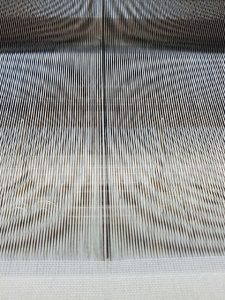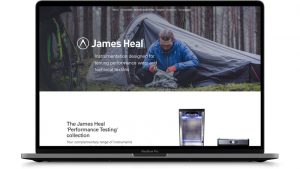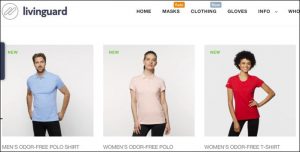WINTERTHUR, Switzerland — July 15, 2021 — Rieter posted an order intake of 975.3 million Swiss francs ($1.1 billion), which corresponds to an increase of 289 percent compared to the previous year period (first half of 2020: 250.7 million Swiss francs ($278 million)). The recovery is broadly supported globally and is based on a catch-up effect relating to the years 2019 and 2020 and a regional shift in demand. Rieter is benefiting from its innovative product portfolio and the company’s global positioning. The highest order intake was recorded in Turkey. On June 30, 2021, the company had an order backlog of about 1,135 million Swiss francs ($1.23 billion) (June 30, 2020: about 490 million Swiss francs ($531 million).
Order Intake by Business Group
In the Business Group Machines & Systems, order intake amounted to 714.8 million Swiss francs ($775 million) (first half of 2020: 129.2 million Swiss francs ($140 million)). In the Business Group Components, order intake rose to 154.9 million Swiss francs ($168 million) (first half of 2020: 76.7 million Swiss francs ($83 million)), and in the Business Group After Sales it increased to 105.6 million Swiss francs ($115 million) (first half of 2020: 44.8 million Swiss francs ($49 million)).
A key driver of growth in the machinery business has been the demand for innovative complete systems in the areas of ring and compact spinning. The successful commercialization of the compacting devices and the piecing robot ROBOspin, launched in 2019, contributed to the increase in the Business Groups Components and After Sales.
Sales by Business Group
The Rieter Group recorded sales of 400.5 million Swiss francs ($434 million) (first half of 2020: 254.9 million Swiss francs ($276 million)). Sales significantly increased compared to the previous year period; however, as expected, they were still impacted by the low order intake of the financial year 2020.
In the first half of 2021, the Business Group Machines & Systems realized sales in the amount of 218.9 million Swiss francs ($237 million), which corresponds to an increase of about 83 percent compared to the previous year period.
Spinning mills are working at good capacity levels with an increased demand for components as well as spare and wear parts, which is the reason for the positive development in the Business Groups After Sales and Components. In the Business Group Components, sales rose to 112.4 million Swiss francs ($121 million) (+28 percent), and in the Business Group After Sales to 69.2 million Swiss francs ($75 million) (+46%).
Sales by Region
In the Asian countries, Rieter recorded sales of 137.0 million ($149 million) (+57 percent) for the first half of the financial year 2021. In China, sales rose by 85 percent to 68.5 million Swiss francs ($74 million) due to spinning mills investing in the improvement of their competitiveness. The recovery of the market in India resulted in a significant increase of 188 percent to 51.0 million Swiss francs ($55 million). In Turkey, sales improved slightly to 59.8 million Swiss francs ($65 million) (+17 percent). Sales increased by 94 percent to 59.8 million Swiss francs ($65 million) in the region North and South America, driven by a considerable increase in demand in Latin America.
EBIT, Net Profit and Free Cash Flow
In terms of EBIT, Rieter posted a profit of 9.0 million Swiss francs ($9.8 million) for the first half of 2021 and a net profit of 5.3 million Swiss francs ($5.8 million). A one-off effect associated with the reversal of allowances for machinery that was delivered in the first half of 2021 contributed to this development. Free cash flow amounted to 53.2 million Swiss francs ($58 million), which was considerably influenced by the advance payments received from customers in conjunction with the significantly increased order intake.
Strategy Implementation and Crisis Management
In recent years, Rieter has consistently implemented its strategy based on the cornerstones of innovation leadership, strengthening the components, spare parts and services businesses, and adjusting cost structures.
Crisis management in the pandemic year of 2020 was aimed at protecting employees, fulfilling customer commitments, ensuring liquidity, and also strengthening the market position for the time after the pandemic as well as retaining the ability to benefit from the incipient market recovery.
The focus for 2021 remains on the implementation of this strategy. The measures for crisis management relating to the protection of employees and fulfilling customer commitments are still in effect in countries that continue to be affected by the pandemic.
The Rieter Board of Directors has approved the implementation of the CAMPUS project. The Rieter CAMPUS comprises a customer and technology center as well as an administration building at the Winterthur location. It will make an important contribution to the implementation of the innovation strategy and to the enhancement of Rieter’s technology leadership position.
Outlook
As already announced, the first half of 2021 has been characterized by a strong market recovery in combination with a regional shift in demand for new machinery and systems. Rieter anticipates a normalization of the demand for new systems in the coming months. The company assumes that spinning mills will continue to work at high-capacity levels.
For the full year, Rieter expects sales to be above 900 million Swiss francs ($976 million).
The realization of sales from the order backlog continues to be associated with risks in light of bottlenecks in material deliveries and freight capacities as well as the ongoing pandemic in key markets for Rieter.
Posted July 15, 2021
Source: Rieter









